
Apamea sordens, the rustic shoulder-knot or bordered apamea, is a moth of the family Noctuidae. The species was first described by Johann Siegfried Hufnagel in 1766. It is distributed throughout Europe, east across the Palearctic to Central Asia and to China and Japan. It also occurs in North America.

Apamea is a genus of moths in the family Noctuidae first described by Ferdinand Ochsenheimer in 1816.

Apamea commoda, the southern Quaker, is a moth of the family Noctuidae. The species was first described by Francis Walker in 1857. It is native to North America, where it is distributed from Nova Scotia west across southern Canada to southern British Columbia, north to Alaska and Yukon Territory, and south at least into Manitoba.
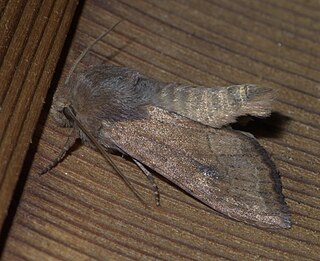
Apamea inficita, the lined Quaker is a moth of the family Noctuidae. The species was first described by Francis Walker in 1857. It is native to North America, where it can be found from Newfoundland west to British Columbia, north to the Yukon and the Northwest Territories, and south to Colorado.
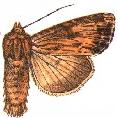
Apamea lignicolora, the wood-coloured Quaker or wood-coloured apamea, is a moth of the family Noctuidae. The species was first described by Achille Guenée in 1852. It is native to North America, where it is distributed across much of Canada and the United States.
Apamea longula is a moth of the family Noctuidae first described by Augustus Radcliffe Grote in 1879. It is found in western North America, mostly from California to the Great Plains. There are also a few records from areas north, including Alberta, Yukon, and Alaska.
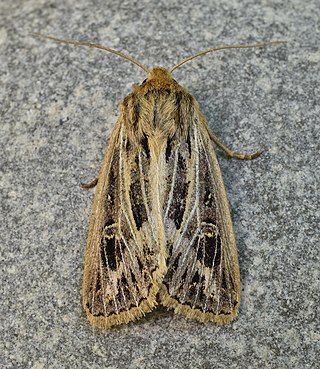
Apamea niveivenosa, the snowy-veined apamea, is a moth of the family Noctuidae. The species was first described by Augustus Radcliffe Grote in 1879. It is native to northern North America, where it can be found across Canada and south to California.
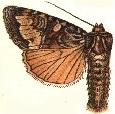
Apamea occidens, the western apamea, is a moth of the family Noctuidae. The species was first described by Augustus Radcliffe Grote in 1878. It is native to western North America as far east as Alberta and Kansas.

Apamea plutonia, the dusky Quaker or dusky apamea, is a moth of the family Noctuidae. The species was first described by Augustus Radcliffe Grote in 1883. It is native to northern North America, where it occurs across the boreal regions, with some occurrences from as far south as New Mexico and Pennsylvania.

Apamea scoparia is a moth of the family Noctuidae first described by Kauri Mikkola, Tomas Mustelin and J. Donald Lafontaine in 2000. It is one of the most common and widespread North American Apamea, being distributed from Newfoundland and Labrador to Alaska and British Columbia, and south to California and Arizona.

Apamea spaldingi, or Spalding's Quaker, is a moth of the family Noctuidae. The species was first described by John Bernhardt Smith in 1909. It is native to interior western North America.

Apamea verbascoides, the boreal apamea or mullein apamea, is a moth of the family Noctuidae. The species was first described by Achille Guenée in 1852. It is native to North America, where it is found from Saskatchewan to Newfoundland and Labrador and south to North Carolina.
Apamea inebriata, the drunk apamea, is a moth of the family Noctuidae. It is found along the east coast of North America from Nova Scotia to North Carolina.

Apamea vultuosa, the airy apamea, is a moth of the family Noctuidae native to North America.

Apamea zeta is a moth of the family Noctuidae. It has a Holarctic distribution, and can be found throughout the Northern Hemisphere. It occurs throughout Europe and the northern half of North America.
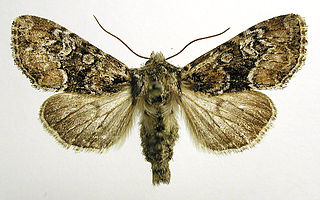
Apamea illyria is a moth of the family Noctuidae. It is found in much of Europe, western Siberia, Turkey, and the Caucasus.

Apamea sublustris, the reddish light arches, is a moth of the family Noctuidae. The species was first described by Eugenius Johann Christoph Esper in 1788. It is found in central and southern Europe, Turkey and the Caucasus.

Apamea furva, the confused, is a moth of the family Noctuidae. The species was first described by Michael Denis and Ignaz Schiffermüller in 1775. It is found throughout Europe. In southwestern Europe it is primarily montane. It is found as far north as the Arctic Circle. From Europe its range extends to Siberia, Turkey, Iran, Kyrgyzstan, Mongolia and Xinjiang in China.










